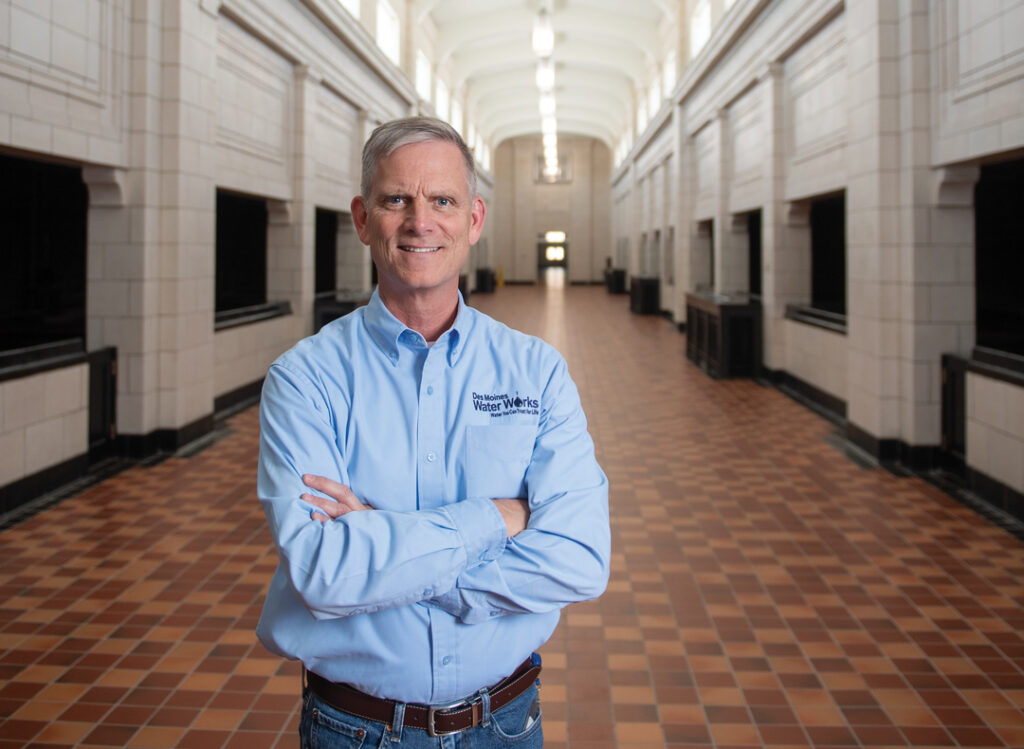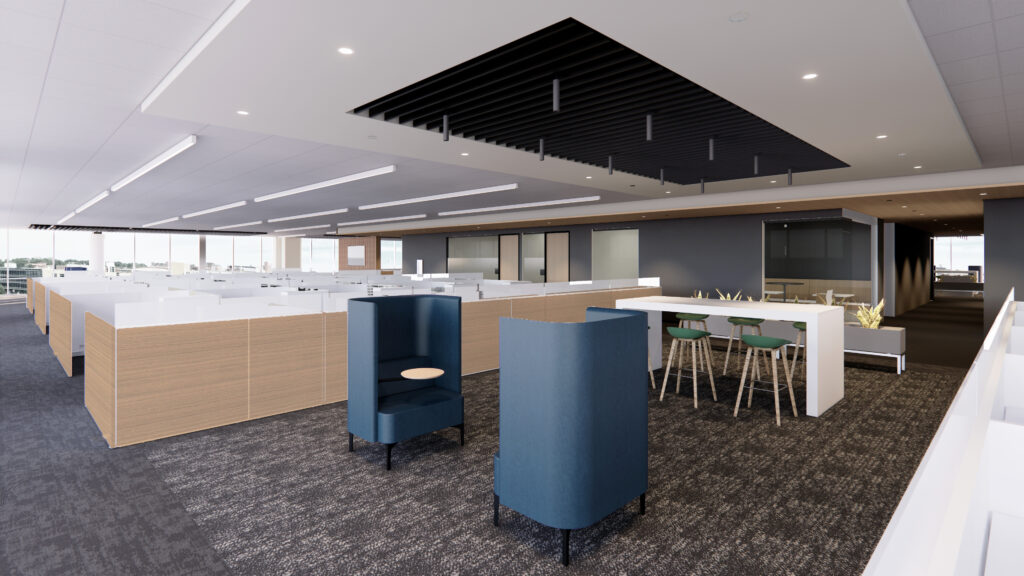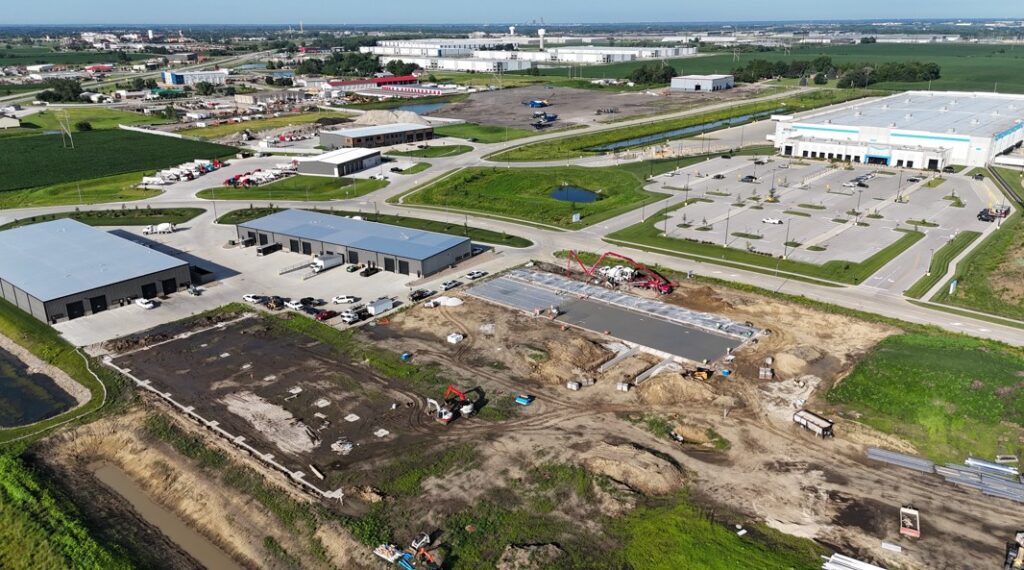2018 Business Record Commercial Real Estate Professional of the Year: Jake Christensen

KENT DARR Apr 24, 2018 | 8:26 pm
8 min read time
1,900 wordsBusiness Record Insider, Real Estate and DevelopmentIn the late 1990s, a well-known commercial real estate broker told Jake Christensen to never drive the same path. He might miss something if he did. Since that time Christensen has found development opportunities on and off the beaten path.
Christensen is the 2018 Business Record Commercial Real Estate Professional of the Year. Previous recipients were Gerry Neugent of Knapp Properties Inc., Rick Tollakson of Hubbell Realty Co. and Richard Hurd of Hurd Real Estate Services.
Each one has had a unique impact on the Greater Des Moines commercial real estate market.
For Christensen, the contributions have been seen largely downtown, where he has led or been a part of significant conversions of industrial and office buildings to apartments. He has saved an old building or two from the wrecking ball and brought new construction to the East Village.
And through it all, Christensen has been active in a range of community organizations, including the Des Moines Airport Authority board, Greater Des Moines Convention & Visitors Bureau, Dowling Catholic High Foundation board, Urban Land Institute, Downtown Community Alliance executive committee and Operation Downtown board.
Not bad for a man who arrived in Des Moines in 1996 with no real idea of what he wanted to do with his life, other than date Urbandale native Susan Fitzsimmons, who he would eventually wed. These days, Fitzsimmons is general counsel for Ruan Companies.
Christensen grew up on a farm near Riceville in northern Iowa. He considered farming a risky business — too much reliance on things out of his control, such as the weather, to make a living.
“When I left to go to college, my dad said, ‘if you want to come back to farm, we will figure out some way to help you’ and I said something to my dad along the lines of ‘thanks, but I don’t want to plant seeds and hope that they’ll grow and then hope that the hail doesn’t kill it and then hope and hope and then harvest it and hope that it’s worth something,’” Christensen said. “My mom recently reminded me that what I do now is not drastically different.”
His father, Gary, died in the 1990s. His mother, Cathy, lives in Ogden.
Christensen did pick up some business lessons from life on the farm. He was a member of Future Farmers of America and 4-H. The family had livestock and Christensen, from about age 9, figured out a way to market the animals.
He graduated in 1993 from Iowa State University with a degree in ag business and went to work as a manufacturers’ representative. After arriving in Des Moines he had a chance encounter with commercial real estate broker Kermit Marsh, a man who Christensen counts as his mentor.
Marsh suggested that Christensen enter the real estate business. “I told him, ‘I don’t even know what you do,’” Christensen said. “He let me ride around with him for a couple of days and I said, ‘This seems like a lot of fun; you just drive around and talk to people.’ ”
From 1999 to 2003, Christensen worked with Marsh at the Grubb & Ellis Co. brokerage, which was part of the late Marvin Pomerantz’s Mid-America Group real estate and development business.
During that time, Christensen took an interest in downtown development, sparked in part by work he did with commercial real estate broker Bill Wright and banker John Bergeson, a key driver of the redevelopment of the city’s East Village.
“When I was a broker, I shifted from predominantly industrial and investment sales to focusing on downtown, that was about 2000,” Christensen said. “Some of my peers said I was crazy and that I would starve downtown. But I found it a lot more interesting, and it seemed there were the beginnings of real momentum.”
He started showing up at Des Moines City Hall, inquiring about possible projects, at the least showing an interest in the city’s future.
“The late Andrea Hauer told me a story about the first time I walked my way into the City Hall, that after I left they were pleasantly surprised that someone was interested in downtown,” he said.
Some of that interest was pricked by Jodi Beavers and Leslie Gearhart who renovated the Arlington Hallett apartments in the early 2000s in what is now the Western Gateway.
“I wasn’t born with any money, so watching them start from scratch and build quite a company (Metropolitan Properties) was a really good example,” he said. “I think growing up the way I grew up, we didn’t really waste anything. So it seems wasteful to take a building and put it in a Dumpster. My mind always goes to: what can you do with that before tearing it down?
“It takes a while to get other people to buy in. At first, it was difficult to convey the idea.”
Christensen recalls that during that time it was difficult to convince businesses that they could succeed downtown.
“The former Quiznos at Seventh and Locust streets, I worked a year and a half to convince them that they could sell sandwiches at that corner; for a while after they opened they were the No. 1 Quiznos in Iowa, and they were only open for lunch at the beginning,” he said.
Patience in negotiations is a signature of any successful commercial real estate broker or developer. Christensen said that some projects have been sitting on his shelf for more than a decade. He plans to dust off a few at some point.
In 2003, he formed Christensen Development. At the time, developer Mike Nelson talked to him about forming a joint venture to take on some projects. Between 2003 and 2009, along with other investment partners, they took on several projects. The historic renovation of what became known as the Workforce Development building in the East Village was the first. They also renovated the Liberty Building and what is now known as AP Lofts on Southwest Fifth Street, two projects that converted office and industrial buildings to apartments and other commercial uses, in the case of the Liberty Building.
Also in the East Village, they built e300, probably best known now as the location of Zombie Burger, but it was a mixed-use structure that included apartments and triggered other development in the old industrial district, especially along East Grand Avenue.
Christensen has a knack for finding opportunities in old parking lots and rundown street corners, and not all of those underutilized properties have been in downtown Des Moines.
A current project is the redevelopment of the former White Water University along East University Avenue in Pleasant Hill. The water park closed in 2005, but the location caught Christensen’s attention and it was a key redevelopment area for the city.
The White Water site is “a perfect example of an underutilized property within a well-established grid and corridor,” Christensen said. In other words, it met the Christensen fit test.
Christensen doesn’t tire of driving around the region in his Tesla, on the watch for diamonds in the rough.
“Kermit said never drive the same path because you will miss something,” Christensen said. “Kermit said you have to think about Des Moines as a puzzle. Those pieces, they exist and they just change hands; you have a list of owners and you have a list of puzzle pieces and you need to pay attention as they change. I’ve always done that.”
Christensen has fit together some interesting pieces of the puzzle.
When the state of Iowa wanted to demolish or move a 19th century row house to expand the People’s Plaza on the grounds of the Iowa State Capitol, Christensen saw an opportunity. Along with investors, he paid $180,000 for a city parking lot at 425 E. Grand Ave., bought the row house, called Norden Hall, and transported the 250-ton structure in a midnight move. At the time, the whole process seemed a curious oddity. After a rehab, it became the location of Della Viti wine bar.
Christensen Development’s offices are located in the former Dilley Manufacturing building at 215 E. Third St., a structure that at one time drew attention mostly because its brick exterior had been painted a “salmony-brownish” color, as one longtime observer put it, that had faded to a forgettable tan. After a rehab that included exposing its native brick, Iowa Taproom, Molly’s Cupcakes and Beal Derkenne Construction also occupy space.
The office is located near East Third and East Court Avenue, an intersection that has been transformed by other Christensen projects that have included recruiting Peace Tree Brewing Co. and Curate event space as tenants.
Since 2009, the focus has been all Christensen Development, though he has managed to pick up other noteworthy partners along the way, including businessmen Jim Cownie and Paul Hayes, Cownie’s son, Sloan, and developer Tim Rypma.
The group formed around an ambitious effort to build an apartment and commercial building on a parking lot Cownie owned at 219 E. Grand Ave. as well as develop a parking garage and mixed-use buildings on the former City Hall parking lot, located nearby. The parking garage is operating, the apartment and commercial building is open and counts national retailer West Elm as a first-floor tenant. Plans are underway to construct a timber-frame commercial building along Des Moines Street on the north side of the parking garage.
Christensen and Cownie have been neighbors since 2008 in the South of Grand neighborhood.
“I always admired his impact both for-profit and nonprofit. I’m kind of a Des Moines history geek … and I was always very aware of who and what he is. When I had the opportunity to work with him on the City Hall block, it was an easy choice,” Christensen said. “And I’m honored that he has chosen to be my partner on several other deals. We’re partners on Jackson Crossing, we’re partners on Peace Tree, and we’re partners on Kryger Auto Glass (Curate, and soon, a brewery).”
Christensen said many of his development ideas come from travel. Florence, Italy, and New York City are favorite destinations — many of the concepts for the renovations of a firehouse into the Des Moines Social Club, the Peace Tree building and the former Dilley Manufacturing came from New York inspirations, for example.
“The other thing you pick up from travel is that you see cities in different timelines. Downtown isn’t all equal, so once you get better at it you can predict accurately where the next projects are going to come from. I think that is part of what we have been good at, anticipating where opportunities might make sense.”
His ideas come to form in a stylized chicken scratch that is brought to life by architects. He has worked with many, but the folks at Slingshot Architecture seem to have a “Jake decoder ring,” he said.
“I always joke that that firm does a really good job of pulling the picture out of my head and then they improve that. … I cannot draw to save my life so I have to have someone else show me what is going on in my brain, and then they always put their own creativity on it and it ends up being so much better.”
Christensen said he has learned a lot from many different developers and designers.
“I think Des Moines is blessed with a lot of creative people,” he said.









